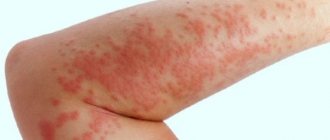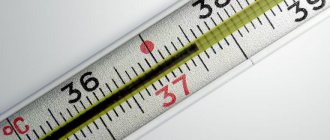When a newborn is born, the umbilical cord, through which all the nutrients enter his body, is cut. The remainder, 2.5-3.5 cm long, is secured. With proper care, it disappears within 7-10 days, leaving a wound. Therefore, the first weeks of life the baby requires increased attention. Inaccurate movement and the integrity of the crust is compromised. Pathogenic bacteria can enter the sore. If young parents know what to do when a newborn’s belly button bleeds, they will be able to cope with the problem on their own, and suppuration will not occur.
Causes
A bloody navel in children immediately after birth and for about 2 weeks is considered normal.
By the month it will heal, treatment and additional care of the navel will not be required. If the navel of a newborn bleeds for more than 4 weeks, you need to find out the cause of the pathological condition. The key factors for a bloody navel may be:
- Thick skin. It is rare, but takes 1-2 weeks longer to heal. There is no danger for the baby.
- Improper care of the umbilical wound. This is overzealous care or lack of attention to the site of the umbilical cord falling off. Do not roughly treat the wound, use alcohol, or seal it, protecting it from water, bacteria and air.
- Rubbing with clothes, diapers. The wound cannot heal due to friction or tearing off the crust by the edges of panties, shirts, and fasteners. Do not fully equip your baby at home for the first weeks after birth; air baths are beneficial for him; wear clothes without seams made of soft fabric.
- Congenital pathologies. This is fragility of blood vessels, low blood clotting.
- Granuloma (umbilical fungus). At the bottom of the umbilical wound, a layer of skin grows, and nodules form focally. It looks like a mushroom.
- Umbilical hernia.
The navel protrudes and becomes larger when crying or coughing. Surgeon's help is required.
- Foreign body inside the wound. You can feel it yourself, but picking and pulling it out at home is prohibited.
- Infection. Accompanied by suppuration and an unpleasant odor. If there is pus discharge or inflammation, you need to go to the clinic urgently, otherwise there will be sepsis.
- Blood diseases. Infection occurs in the womb or immediately after birth; the baby’s immunity cannot cope with wound healing.
Compare what a healthy navel looks like in a two-week-old baby and a wound with a granuloma:
Why does a newborn's belly button bleed?
Have you been trying to heal your JOINTS for many years?
Head of the Institute for the Treatment of Joints: “You will be amazed at how easy it is to cure your joints by taking the product every day for 147 rubles...
You should not worry if healing proceeds quickly, and the umbilical wound bleeds only with accidental movement, if the edge of the formed crust comes off after bathing or stretching the ring surrounding the residual process. In this case, only a few drops of plasma are released, and everything dries out again.
A list of more dangerous reasons why a baby’s navel bleeds:
- careless actions when changing a diaper - systematically tearing off the crust;
- the umbilical cord was too thick, causing regeneration to be slow;
- due to an obstetric error - the remaining umbilical cord is too short or too long;
- the newborn's wound is bleeding due to problems with blood clotting;
- increased fragility of blood vessels;
- reduced infant immunity caused by prematurity or organic diseases;
- allergy to treatment products;
- the scab develops because the baby is overheated;
- in the open wound, blood vessels grow, granulation occurs (visually it looks like a red ball in the umbilical cavity), and when placed on the stomach or touched, the navel bleeds;
- too delicate skin, irritated when using preparations with ethyl alcohol, which causes healing to be delayed;
- inexperienced parents peel off the flaky, dried edges of the scab;
- for bathing they use too hot water or wipe the entire body with a hard washcloth, the crust gets wet after bathing and comes off.
If a scab has formed over the wound, and then the navel suddenly begins to bleed, and the child becomes restless, you need to consult a pediatrician. Long healing is dangerous. When suppuration occurs, an infection may enter the wound. In children in the first months of life, metabolic processes are accelerated, pathogenic microorganisms quickly spread throughout the body - there is a high risk of developing sepsis. The most dangerous is Staphylococcus aureus.
How long can a belly button bleed?
The healing time for a wound in a baby is 10-21 days, and complete healing can last 40-45 days. This is considered the norm.
The residual umbilical cord, which is a nodule, falls off 7-10 days after birth. The wound may bleed for a long time, it is deep, but within 5-6 days a dense scab will form. It gradually becomes thinner, starting from the edges, peels off, and there is little discharge. The color of the liquid that flows out when the crust peels off is yellowish-pink. If you damage the scab, blood will start flowing from the navel again, and healing will be delayed.
Why does my belly button bleed? Variants of norm and pathology
Bloody discharge can appear in a baby for many reasons:
- The umbilical cord is too massive. Some babies initially develop a rather small umbilical cord, which, in principle, is quite physiological and is considered a variant of the norm. However, the wound after cutting the umbilical cord in this case turns out to be massive, and therefore requires a longer time to heal.
- Damage. A diaper that is too tight, placed incorrectly on the tummy, or uncomfortable clothing can unwittingly cause irritation in a delicate area, causing the wound to become inflamed and bleed. You should take precautions and treat the child more delicately - then recovery will not be long in coming.
- Foreign body in the wound. The navel may bleed because a foreign body has entered the wound - a small piece of garbage, cotton wool residues after treatment, etc. If you notice something like this, do not try to deal with the problem yourself - by removing the foreign body, you will further damage the healing navel, causing the bleeding to increase. In addition, unsterile tweezers can cause inflammation and infection of the damaged area. Therefore, in this case, it is better to consult a doctor.
- Incorrect processing. Insufficient hygiene, as well as excessive processing and disinfection of the navel, is one of the first reasons for taking too long to heal and, as a result, bleeding.
- Lack of oxygen baths. Constantly wearing a diaper and thick clothing can negatively affect the recovery processes occurring in the child’s body. It is necessary for the baby to regularly “ventilate” the tummy - free access of oxygen helps to dry out the navel.
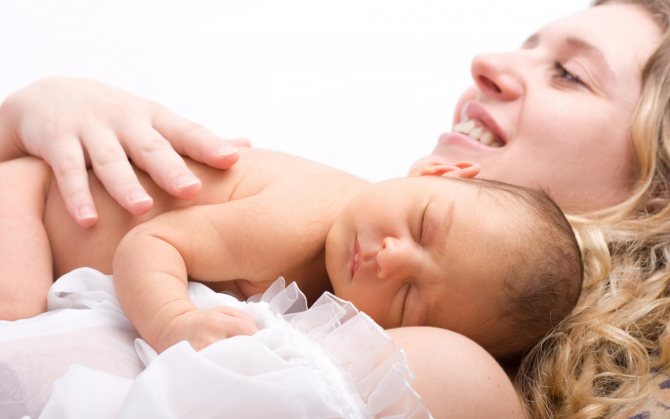
- Attachment of infection. If pathogenic bacteria enter the umbilical ring, an inflammatory process may begin, which requires immediate medical attention. If you notice the presence of pus in a newborn and an unpleasant odor near the navel, immediately call the pediatrician - self-medication in this case is useless and even dangerous.
- Umbilical hernia. Unfortunately, this pathology occurs quite often in infants, so it should not be completely discounted. When a hernia forms in the navel area, a specific protrusion will periodically appear in the child, especially noticeable when the abdominal muscles are tense - crying, coughing, etc. In this case, the baby needs a competent consultation with a pediatric surgeon, who can determine the degree of the anomaly and prescribe the correct treatment.
- Granuloma. This option is one of the most serious. With granuloma in the body of a newborn, a pathological proliferation of connective tissue and blood vessels occurs, which leads to prolonged systematic bleeding.
- Problems with the circulatory system. This abnormality may be caused by a low platelet count, poor blood clotting, or increased vascular fragility. If the navel bleeds for an unreasonably long time, you should definitely take a general blood test - it will show possible abnormalities.
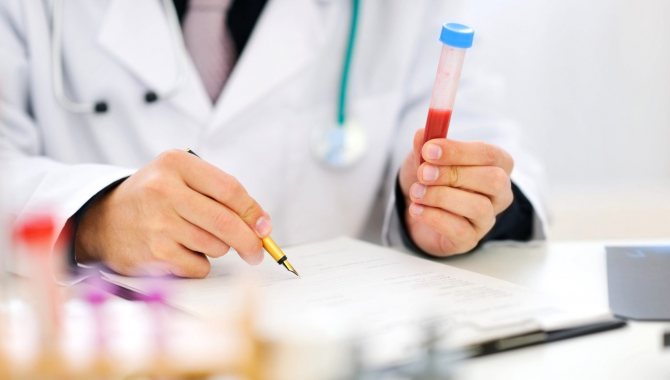
Causes
The umbilical cord, which connects mother and fetus during pregnancy, is an interweaving of 3 vessels:
- two arteries that supply the baby in the womb with oxygen and substances important for life from the placenta;
- the only vein that transports fetal metabolic products to the mother's body.
When the umbilical cord is cut, a clamp or clothespin is placed on the remainder of the cord.
The first weeks of a child’s life, the navel is a wound, next to which there is a large node of blood vessels. They supply internal organs with blood. It is very easy to disrupt the healing process by any awkward movement: improper changing of a diaper or unwashed hands when treating a wound or caring for a baby. Sometimes this wound can go away on its own.
Navel healing usually occurs in 3 stages:
- On days 3-7, the remainder of the umbilical cord completely disappears. Now is the time to get rid of the clip or clothespin.
- Within 3 weeks, the navel is partially healing.
- After a month, the umbilical wound is completely healed.
There are several reasons why the belly button continues to bleed:
No air baths. The wound does not dry out quickly due to the lack of constant air circulation. It is necessary to ensure access to oxygen to the child’s body, using clothes and bedding only from natural fabrics. The cause of bleeding can be a regular diaper covering the navel and rubbing the unhealed wound. Incorrect treatment of the wound. The reason for prolonged healing and bleeding of the navel is also the excessive zeal of the mother in caring for the newborn. Poor healing and injury can occur if the umbilical ring is cleaned very carefully. Then there is a risk of damaging the developing tissues. Features of the umbilical cord. A thickness of 1-1.5 cm is considered normal. If its diameter reaches 2 cm, then the healing process often occurs only in the 3rd or 4th week. Weakened immunity. In the first days of life, the baby finds himself side by side with a huge number of infections and microbes. A weak immune system will not be able to cope with possible inflammatory diseases such as sepsis. Injury. Pediatricians do not recommend placing babies on their tummy until they are 3 months old.
If you are careless, you can damage the wound, causing bleeding. Infection. The inflammatory process in the navel area can be triggered by a foreign particle entering an unhealed wound.
This could be a piece of cotton wool that was used to treat it.
Less common reasons why a newborn's belly button bleeds are:
- problems with blood clotting;
- development of an umbilical hernia;
- improper cutting of the umbilical cord.
Due to inexperience, young mothers may not immediately pay attention to problems with the navel. The general condition of the child remains satisfactory: the baby is calm, the temperature is normal, there is no pain.
But if you notice blood, discharge in the form of purulent-serous fluid or ichor, do not delay visiting a doctor.
Caring for a newborn's belly button
In place of the fallen umbilical cord, the newborn is left with a small wound. With proper care, it will heal quickly. And the baby will get a neat navel.
Throughout your pregnancy, the baby was connected to you by a thin “rope” - the umbilical cord. It was attached to the placenta, from which oxygen and nutrients were supplied to the fetus through arteries and veins. After birth, the umbilical cord continues to pulsate. Doctors apply a clamp to it and then carefully trim it.
The remnant of the umbilical cord slowly dries out and falls off after a few days. And there remains an open wound in this place
In order for a child’s navel to heal quickly and without complications, you need to pay attention to the wound every day.
But you won't need any special medications. It is enough to carefully care for this delicate place. Doctors at the maternity hospital will tell you how to do this. The navel will finally heal by the end of the first month of the baby’s life.
Umbilical ring
Sometimes a baby's umbilical ring closes more slowly than usual. As a result, a small (about a centimeter) umbilical hernia may appear. There is a high probability that it will go away when the abdominal muscles get stronger. In the meantime, make sure your baby doesn't cry as much. After all, when he screams, he greatly strains his abdominal muscles, and this will only make the hernia grow larger.
To help your baby, do exercises with him to strengthen the abdominal wall - then the hernia will disappear faster. To do this, place the baby on his stomach on some hard surface more often. If, despite all your efforts, the hernia does not decrease, be sure to seek advice from a doctor.
Healing of the navel in a newborn
As a rule, the navel heals quickly and without problems, and only in rare cases is this process delayed. But there are situations when a mother must urgently call a pediatrician. Your baby needs immediate medical attention if you notice the following symptoms of navel inflammation:
- the skin around the navel is red and swollen.
- pus leaks out from behind the umbilical cord or there is a slight discharge with an unpleasant odor.
The doctor will recommend antibiotic ointment and, if necessary, prescribe other treatment.
Discharge from the navel
Surely you know the expression “the navel is untied.” Having heard it, many mothers begin to worry whether something similar will happen to their baby. Doctors say: there is no such diagnosis in medicine. Bloody discharge in the navel area can be observed until the newborn's navel has healed.
How to treat a newborn's navel
To keep your belly button dry:
- it must be kept open;
- the baby must be kept in loose clothing;
- the edge of the diaper should not cover the navel;
- there is no point in bathing the baby in the first days of life: it is enough to wash it and wipe the natural folds with a damp sponge (but if you wish, you can bathe the baby in boiled water);
- if the navel is dirty, it must be washed with a cotton swab soaked in clean boiled water and then dried with a sterile gauze cloth (if you don’t have a sterile cloth or bandage at hand, take a regular cloth and iron it on both sides);
- When treating a newborn's navel, you should not use dry cotton wool, as its fibers may stick to the surface of the navel.
When treating a newborn's navel, you can sometimes observe a small discharge from the navel, similar to pus, which makes the navel sticky and smells unpleasant. However, this is a normal phenomenon that should not cause concern (provided that the discharge is small).
After the umbilical cord has fallen off, small serous or bloody discharge may also appear from the navel. There is no need to worry if a newborn’s belly button bleeds a little: the wound will heal on its own in a few days and stop bleeding.
However, if a newborn’s navel has been bleeding for more than 10 days, you should consult a pediatrician. Sometimes an umbilical wound can be difficult to heal due to excess scar tissue (umbilical granuloma), and this pathology can cause a newborn's belly button to bleed. With omphalitis (inflammation of the navel), the umbilical wound becomes weeping for about two weeks, the ring around the navel turns red, purulent discharge continues, and the navel of the newborn also bleeds. Such symptoms should be a reason to contact your pediatrician.
Navel treatment
Even within the walls of the maternity hospital, the child’s umbilical cord is treated by medical personnel. During this period, a new mother should carefully observe all actions and remember them. In just a few days she will have to carry out such procedures on her own. The wound needs to be treated with special means. They must be purchased in advance. Ask your relatives to take care of this.
A typical first aid kit for caring for a baby's navel includes brilliant green, a sterile bandage, cotton wool, sticks and tweezers. It is also worth purchasing hydrogen peroxide or manganese solution. In some cases, pediatricians advise using newer and more modern liquids. However, you should not replace medications yourself. If your baby's navel is festering, then most likely the treatment was carried out incorrectly.
Let's present a step-by-step scheme for cleansing the wound.
First step: cleansing
If your baby's navel gets wet, then this manipulation needs to be done several times a day. In the normal course of events, a one-time impact is quite enough.
Wipe the area around the wound with baby wipes. After this, take hydrogen peroxide or another remedy that the doctor advised you to use. Apply a few drops of the composition to the navel area. If you apply peroxide, it should sizzle. Don't be scared by this. The child does not experience any discomfort during the manipulation.
One day, during the next treatment, the composition will stop producing foam. This indicates that the wound has healed.
Second step: drying
After cleansing with peroxide, wait a few seconds. Next, take a cotton swab and soak it in the same solution. Gently blot the wound area and clean the navel of dried crusts. They should get wet under the influence of the liquid. Do not peel off heavily dried crusts. Otherwise, the baby may feel pain.
After removing the crusts, take dry cotton wool or a bandage and blot your navel. All liquid should be absorbed into the fabric.
Third step: disinfection
After the skin is dry, take the brilliant green and apply it to the wound area. There are two ways to do this. Take a couple of drops of solution into a pipette and drop it into the very center of the navel. You can also take a cotton swab and soak it in brilliant green. After this, you need to treat the wound.
Please note that this product may stain fabric. That is why after processing you need to wait a few minutes until the brilliant green is completely dry.
Navel care
July 30, 2017
For 9 months the baby was connected to his mother by the umbilical cord. Now there is no need for it, and the umbilical wound will heal very soon. This is a natural process!
After the baby is born, the doctor clamps the remaining umbilical cord with a special clamp. After a few days, this part dries out and falls off. This process usually lasts 4-10 days (depending on the thickness of the umbilical cord). After this, an umbilical wound remains, which gradually (over about 10-14 days) heals, and finally heals before the end of the first month of the baby’s life.
The modern approach to caring for a baby’s navel differs from that adopted in pediatrics 10-20 years ago.
Our practice has proven that the healing of the navel with proper care occurs much better without unnecessary intervention. If the process occurs naturally, there is no need to specifically treat the umbilical wound with medications. The need to use drying and disinfecting solutions or other agents can only be determined by a pediatrician. Therefore, if you have any doubts or alarming symptoms, it is important to contact your pediatrician without delay.

In order for the umbilical wound to heal without complications, it is important for parents to adhere to the following rules.
- The most important thing is to ensure free circulation of air in this area. This way the remainder of the umbilical cord will dry out faster and the umbilical wound will heal. You can give your child air baths for several minutes 3-4 times a day from birth.
- It is important to turn down the edge of the diaper so that it does not rub the baby's belly button. There are special diapers for newborns that allow you to leave the navel area exposed.
- There is no need to help the umbilical cord fall off, it should happen naturally.
- Try to keep the skin near your navel dry. Wipe it thoroughly to remove any moisture. The baby is not in pain - the remainder of the umbilical cord has no nerve endings.
- It is important not to wrap the child up: his clothes should not block the air supply. Loose undershirts, pants with a soft waistband that can be pulled down, diapers and light blankets will allow the navel area to breathe.
Some parents begin to bathe their baby in the first days of life. Doctors at our clinic prefer to wait until the remainder of the umbilical cord falls off. There is no need to use a solution of potassium permanganate - this is very harmful to the delicate skin of a newborn.
After the umbilical remnant falls off, navel care remains virtually unchanged. If there is no crust, then the umbilical wound does not require special treatment. After water procedures, it is carefully dried with a cotton swab and allowed to dry.
Attention! You should not try to change the shape of your belly button with adhesive tape or other means. This will not help, but it will make the wound much more difficult to heal. Even if your baby's belly button seems too big or irregularly shaped, don't worry—this will change over time! Each person's navel has the shape determined by their genetics.
If the navel is healing normally, it does not require any treatment. But if you notice discharge, blood or inflammation, contact your pediatrician immediately!
Symptoms of pathology
The main sign of the development of an inflammatory process in the navel is systematic or intermittent bleeding.
Bleeding from the navel may be accompanied by the following symptoms:
- discharge of different etiologies: curdled, purulent, etc., often accompanied by an unpleasant odor;
- redness, darkening (blue discoloration) of the skin around the navel;
- swelling of the navel and surrounding epidermis;
- pulling pain in the lower abdomen;
- pain when pressing on the umbilical area;
- fever, general malaise - rare.
Experts do not recommend self-medication, since self-treatment of the umbilical wound can lead to serious complications. To find out the true cause of umbilical bleeding (discharge is a consequence of pathology), you need to immediately see a surgeon. The doctor will conduct a visual examination, take the contents of the navel for analysis, and, if necessary, prescribe additional tests, for example, radiography, ultrasound of the abdominal cavity. Based on the diagnostic results, he will prescribe treatment individual for each patient.
A newborn's navel bleeds - prevention
An important aspect in the timely healing of navel bleeding is measures to quickly stop bleeding and prevent the development of complications:
- careful care of the umbilical wound, as mentioned above;
- if there are no indications for treatment with antiseptic agents, use the “dry” method of caring for the umbilical cord;
- increasing the child’s body’s defenses;
- strict provision of all possible types of care for a newborn at home (bathing, washing, clean linen, frequent ventilation and air baths, changing diapers, rompers, monitoring the navel skin);
- wearing clothes made from natural fabrics by adults and avoiding navel piercing, scarring, and tattooing to avoid injuries to the child’s navel.
Plays a big role:
- breastfeeding immediately after birth;
- constant cohabitation of the newborn with the mother from the first minutes;
- contact with the mother’s skin as early as possible after birth to populate the navel and baby’s skin with the mother’s microflora.
If navel bleeding occurs in a newborn, you cannot expect that everything will go away on its own. You should immediately seek advice from a pediatrician and strictly follow all instructions to avoid complications.
Attention to the child’s condition, proper care and timely treatment will help maintain health and avoid unpleasant consequences.
Causes of umbilical wound bleeding
- Umbilical cord thickness: If the umbilical cord is thick, the umbilical remnant dies within at least 10 days, and complete healing of the umbilical wound occurs in the 3rd or 4th week.
- Violation of sterility when processing the navel (as an option, contact with unboiled water). In this case, bacterial contamination of the wound surface occurs and the inflammatory process begins.
- Introduced intrauterine bacterial infection.
- Traumatic damage to the wound surface associated with the mother’s desire to clean the wound well. The healing surface of the umbilical ring is damaged when removing crusts with rough materials (a cotton swab, for example). Damage can also occur due to the early placement of the baby on the stomach, because of this the navel may begin to bleed intensely.
- Anaerobic conditions in the wound, which can occur due to improperly worn diapers or other non-woven diapers. This often occurs as a result of covering the navel with a band-aid, when parents believe that this will protect the wound from infection.
- The weakening of the newborn’s immunity also leads to the umbilical wound bleeding for a long time.
- Fragments of foreign objects in the wound, for example, pieces of a cotton swab.
Reasons why the navel bleeds in newborns
- slight bleeding may occur as a result of damage to the crust when you change the baby or after changing the diaper. If the bleeding has stopped on its own and healing continues, then there is no need to worry; you should carry out the treatment as usual, but next time be more careful;
- It happens that the umbilical cord is thicker than usual and it takes longer for the umbilical wound to heal. A slight bleeding in this case is acceptable. It is necessary to ensure the sterility of the wound and disturb it as little as possible;
- sometimes mothers can overdo it with the treatment, and with frequent use of various aggressive medications, the wound remains bare and a crust does not have time to form on its surface, therefore, it does not heal well;
- poor air circulation around the umbilical wound. For rapid healing, constant access of air is necessary; to ensure this, you should not cover your navel with a diaper and certainly do not seal it with a band-aid;
- sometimes the cause may be the baby’s weakened immunity;
- Injury to the navel occurs when placing it on the tummy early. You should not place your newborn on his stomach until he is 3 weeks old or until the umbilical wound is completely healed;
- bleeding can be caused by an umbilical hernia; it can be recognized by a strongly protruding navel, especially when the baby coughs or cries;
- infection can also cause bleeding of the wound;
- The most serious cause of bleeding is the development of umbilical granuloma. This is a pathology in which connective tissue and blood vessels overgrow too quickly.
What to do if a newborn's belly button bleeds
The birth of a new person is always accompanied by the cutting of the umbilical cord connecting him to his mother. With the onset of this moment, the child’s body becomes independent, retaining only a reminder of the former connection: first the umbilical cord remnant, and after 4-5 days, when the umbilical cord remnant falls off, the umbilical wound, which after healing turns into a navel. But this process does not always go smoothly. It happens that the umbilical wound cannot heal for a long time.
Reasons for long healing of the umbilical wound
- Individual characteristics of the umbilical cord. In some cases, the umbilical cord is too thick, so the trace from it has a larger area, which contributes to longer healing.
- Insufficient air access to the umbilical wound. Limited air flow causes drying to be too slow, so contact of the umbilical wound with the diaper and rare air baths negatively affect healing.
- Periodic rubbing of the umbilical wound with a diaper or too careful treatment of the umbilical ring by the mother. These actions lead to the fact that the newly formed crust is constantly removed mechanically.
- Spontaneous removal of the crust on the umbilical wound and the appearance of blood as a result of the baby’s screaming and crying. In this case, there is no need to worry; such bleeding is not dangerous.
- Placing the baby on his stomach too early. This action is not recommended for up to three months.
- Foreign particles accidentally entering the wound.
- Bathing a child before the umbilical wound heals without following the rules of water disinfection. Read more about bathing a newborn here.
When to see a doctor
- The umbilical wound bleeds and does not heal for more than three weeks. This symptom is characteristic of an umbilical fistula.
- Difficult to stop and frequent bleeding.
- The skin around the umbilical wound is red and slightly swollen. Such signs are characteristic of an infectious disease, omphalitis.
- Unpleasant odor emanating from the wound.
- The navel does not decrease in volume.
- Increased temperature of the baby's body or the area around the navel.
- Discharge of pus, ichor, yellowish or whitish discharge.
- The umbilical wound becomes more convex, which may indicate an umbilical hernia.
- A “ball” appeared on the leg in the area of the umbilical wound, and the stomach became red. With such symptoms, umbilical granuloma cannot be ruled out.
Important! Be sure to consult a pediatrician if the umbilical wound does not heal for more than three weeks or there is a suspicion of an inflammatory process in the form of discharge, redness, and fever
What to do if your belly button is bleeding
- Treat the umbilical wound once a day using no more than two antiseptics. It is better to carry out the procedure after bathing, but if the child is overly excited, it is better to postpone it to another convenient time.
- Soak a cotton swab with 3% hydrogen peroxide and gently blot the wound without rubbing. You can use a pipette and drop a few drops there. In the latter case, you will still have to additionally use a cotton swab to remove soft crusts. It is believed that the wound has healed if the peroxide stops fizzing when treating the baby’s navel.
- If there is a significant amount of discharge, change the swab or cotton swab to a clean one. If you overdo it with peroxide, remove the excess.
- Treat the umbilical wound with brilliant green. Some mothers use 1% alcohol chlorophyllipt instead of brilliant green. Providing an antiseptic effect, it does not stain the skin, giving an idea of the progress of healing of the umbilical wound by its color. The appearance of swelling or redness will be clearly visible. Before using it, consult a specialist.
- Report a bleeding umbilical wound to your doctor. Before the examination, do not treat with brilliant green so that the specialist gets an adequate idea of the child’s condition.
Recommendations for child care
- If possible, bathe a child with an unhealed umbilical wound only in boiled water with the addition of potassium permanganate.
- Change your baby's clothes twice a day, even if they are not dirty.
- Disinfect your child's washed clothes with a hot iron.
- Do not allow the umbilical wound to be covered with a diaper, or use a model with a special cutout and carry out air baths as often as possible.
What to do
When a newborn’s belly button bleeds, you need to do everything you were taught in the maternity hospital. Upon discharge, nurses show you how to properly treat the umbilical wound. If you follow all the recommendations, bathe the baby in a timely manner, and do not put him on his stomach early, the scab will fall off on its own and no problems will arise. But if there is blood coming from the navel, you should think about whether the child is being cared for correctly. It may be necessary to change the treatment or diapers that cover the part of the abdomen where the wound is located.
Proper processing
If you see blood from a newborn’s navel, you need to completely treat the wound: carefully apply a few drops of hydrogen peroxide or brilliant green. To reduce mechanical impact, a tampon is not used. The antiseptic is drawn up with a pipette and gently dripped onto the peeling edge of the crust. Manipulations are carried out 2 times a day. The first time in the morning, the second time after swimming.
Until the umbilical cord dries out, the entire umbilical ring is treated first, and only then the dried appendage. Move from the edge of the site to the center. If a newborn's navel is bleeding, drop peroxide and wait until it stops bubbling. Then carefully remove the crusts that have formed inside the umbilical ring with a cotton swab. They should come off easily. If they don't come off, there's no need to rip them off.
The antiseptic treatment is repeated. You need to try not to touch healthy skin so as not to injure. You should not worry if a small amount of ichor is released immediately after treatment. This is normal - the liquid dries out quickly and a crust forms.
Principles of care
When a child’s belly button bleeds from time to time, the wound is treated more thoroughly, up to three times a day. Manipulation algorithm:
- The umbilical ring is stretched and 2-3 drops of hydrogen peroxide are applied to the wound using a pipette.
- Leave it for the entire period of foaming and evaluate how many blood fragments have separated.
- Remove the accumulation of dried particles and dry the wound with a cotton swab. The more thoroughly the treatment is carried out, the lower the risk of infection.
- If there was little ichor, apply brilliant green immediately. The crust has peeled off, slight bleeding is noticed - first blot it with a swab or cotton swab soaked in Chlorhexidine, let it dry, and only then cauterize it with a solution of brilliant green.
Important information: How to treat diarrhea (loose stools) with blood in an adult and why there is bleeding from the anus
All manipulations are carried out carefully, without touching the surrounding skin. When the antiseptic gets on healthy tissue, irritation occurs and the wound surface increases.
Diapers
Blood begins to leak from the baby's navel if the crust constantly gets wet and wet. To prevent this from happening, provide constant air access. When putting on a diaper, fold the top edge - it should not cover the scab. Now they sell special diapers for newborns - with a cutout at the top.
The child should be changed more often - every 2-2.5 hours. Staying in diapers for a long time increases sweating. If the baby's skin is constantly wet and diaper rash appears under absorbent panties, parents will have to sacrifice their own comfort and use gauze diapers.
Bathing
Many pediatricians believe that until the navel has formed and the appendage with the clothespin has not fallen off, the scope of hygiene measures should be limited to wiping the body with wet wipes and washing the groin area. But if the child is sweating a lot, you can’t do without bathing.
Recommendations for hygiene procedures while the navel is bleeding:
- The baby bath is treated with disinfectants and washed thoroughly.
- The water is boiled and then cooled to +37°C.
- Potassium permanganate is an effective antiseptic, but if there is too much of it, the skin will dry out and the crust on the umbilical wound will begin to peel off prematurely. Therefore, it is better to add a decoction of string or chamomile to the water. 3 tbsp. l. dried herbs are poured with 3 cups of boiling water, boiled for 15 minutes and filtered thoroughly.
- When using potassium permanganate, you need to make sure that all crystals are completely dissolved. Add no more than 1.5 g of potassium permanganate to the baby bath.
- Before bathing, the baby is not placed on the stomach. They are lowered into the font, supporting the back of the head and back with their hands. Touching the stomach should be avoided.
- Do not wipe the stomach with a sponge. When pouring water, direct the stream onto the shoulders.
After bathing, the navel is re-treated. If the crusts come off easily and no bleeding occurs, they are removed with a cotton swab. The skin is wiped with Miramistin or Chlorhexidine.
When to see a doctor
If the wound does not heal, and after each scheduled treatment the newborn bleeds from the navel, you need to contact a pediatrician. But this is not the only factor indicating that the regenerative process is being delayed or that there is a danger for the baby.
Important information: Why does bleeding occur while taking Visanne?
Inflammation is indicated by hyperemia (redness) and swelling of the skin near the umbilical wound, the appearance of an unpleasant putrid odor, a general increase in temperature, and suppuration of the scab. The pediatrician should be notified if a bleeding wound does not heal for more than 3-4 weeks, pus is released from under the crust, and the affected surface of the skin expands.
Omphalitis (a bacterial inflammatory process of the bottom of the umbilical wound, often caused by the introduction of Staphylococcus aureus), the formation of granulations and dermatitis require treatment. The doctor must decide which methods to use. Antibiotics, physical therapy, and even surgery may be required.
Prohibited actions
In the first days after the birth of the child, the navel bleeds after each treatment. There is no need to be alarmed; when the umbilical ring is stretched, the integrity of the capillaries is disrupted. As soon as the dried umbilical cord falls off, the wound should be carefully blotted so as not to damage the developing crust.
You should not put a bandage or stick an adhesive plaster on your newborn’s navel, even while bathing. High humidity and lack of air create favorable conditions for the development of pathogenic bacteria.
There is no need to expand the range of antiseptics. The skin can be treated with hydrogen peroxide, brilliant green, Chlorhexidine or Miramistin. Systemic drugs with antibiotics, antimicrobial components or hormones are used only as prescribed by a pediatrician. The use of folk remedies at this stage is dangerous.
Often the wound is not bothered. In the first weeks after birth, antiseptics are applied 2 times a day, when the scab has peeled off - 1 time. With increased bleeding, the number of manipulations can be increased up to three times a day. You should not touch the navel again while the healing is progressing.
The speed of wound healing depends not only on the condition of the baby, but also on proper care. If you do not injure the scab again, do not tear off or soak the crust, regularly carry out processing manipulations and take air baths, in a month the navel will heal completely.
What to do if a newborn’s navel bleeds (video)
Maybe then you don’t need to go to the doctor? No, you definitely need to go - in very rare cases, blood from the navel can be a consequence of a more serious disorder. It’s good if you don’t have anything serious, but it’s better not to take unnecessary risks. Now let's look at a few tips on how to properly treat your navel:
As mentioned above, doctors usually advise treating the wound with an antiseptic. Hydrogen peroxide works well for this purpose. You can also use iodine or brilliant green. Sometimes doctors prescribe special antiseptics, for example, fucorcin. However, it is recommended to buy the medicine yourself. Buy it only as prescribed by your doctor. Apply an antiseptic to a cotton swab or cotton swab and gently wet the wound. When the umbilical cord falls off, several thick yellowish crusts may form around the area where it used to be. They also need to be moistened with an antiseptic until they fall off on their own.
This is important - pathogenic organisms can multiply on these crusts, they need to be killed with an antiseptic. If possible, avoid taking water baths
You need to wash your baby, but don’t do it too often
Warm water causes the skin to swell, which can cause increased bleeding. But the child still needs to be bathed. To do this, you need to prepare a safe bath - to do this, take boiled water and add a little potassium permanganate. After taking water procedures, you do not need to thoroughly wipe the baby’s tummy, let the water evaporate on its own.
Pay attention to the baby's clothes and diaper
Do not wear them too tightly to the body, leave a small gap for air circulation (it is important that the room is warm, otherwise you will catch a cold)
- In this case, you will need hydrogen peroxide. Moisten a cotton pad or swab with peroxide and blot the navel. Peroxide should also be used to remove crusts that form on the umbilical wound; various bacteria can multiply in them. To make these crusts easier to remove, hydrogen peroxide is needed, as it does an excellent job of softening them.
- During the bleeding of the umbilical wound, swimming is strictly prohibited! You can wipe the baby with a damp cloth, but without touching the navel.
- After each treatment of the navel with hydrogen peroxide and removal of crusts, it is necessary to treat the umbilical wound with brilliant green.
Daily newborn care
Basic procedures
What is the daily care of a newborn, how to wash the baby and care for the umbilical wound, how to change diapers, take care of nails, feed the baby and walk with him - we will tell you about these basic procedures for caring for a newborn in our article. When the time comes to return home with a newborn from the hospital, every mother begins to worry about how she will care for her child without the help and competent advice of medical personnel.
All mothers, without exception, worry whether they will be able to provide their child with the care necessary for his healthy growth: bathe the baby correctly, cut his nails, treat the umbilical wound.
Therefore, no sooner have mothers crossed the threshold of their home than they have many questions about caring for the child: is it worth washing the baby after each urination, what is better to treat the navel: with brilliant green or calendula tincture?
Today we will try to find answers to the main questions about baby hygiene and talk about the basic procedures for daily baby care.

Morning toilet of a newborn
Like every person, the baby must wash his face in the morning; of course, his mother should help him with this.
After the newborn wakes up, undress him naked and let him lie naked for a while - this is good for the baby’s skin. Then carefully examine the baby, check for redness on the skin or prickly heat. If so, prepare baby cream to lubricate problem areas after washing your baby.
The baby is washed with cotton pads soaked in warm boiled water. Washing the newborn is done from top to bottom. Wipe your baby's eyes from the outer edge to the inner. For hygiene of each eye, it is recommended to take a new cotton pad. Gently wipe the baby's face, the outside of the ears, the skin behind the ears, and the neck with a damp cotton pad.

Listen to the baby's breathing, it should be free. If breathing is difficult, clear your baby's nose. To do this, you can use a special saline solution for children under one year old and an aspirator (a device that helps suck out mucus).
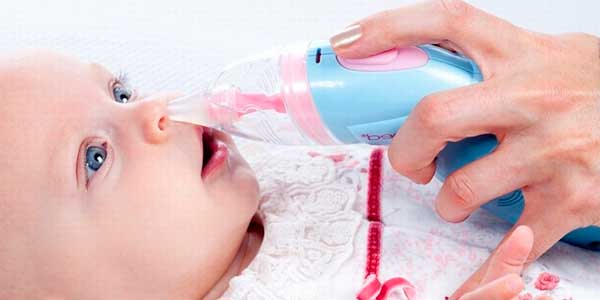
In addition, you can clean the crusts from your nose using two small cotton swabs soaked in baby oil. The flagella must be carefully inserted one by one into each nostril of the child’s nose and scrolled several times. If the baby's nose breathes well, then there is no need to clean it.

Then you need to wipe all the folds of the baby’s skin with a damp cotton pad, replace the child’s dirty diaper with a clean one, wash the baby or use baby wipes to cleanse the skin.
Caring for the umbilical wound
During the newborn period, a special place on the child’s body is the umbilical wound; it requires careful care. As a rule, the umbilical wound is treated once a day; this can be done after bathing, when all the crusts are wet from the water and the mucus is washed away.
How to treat a newborn's navel? There are several methods for treating the umbilical wound, each of them is quite effective:
- caring for the navel with boiled water
- to do this, once a day, moisten a cotton pad with boiled water and thoroughly wipe the umbilical wound so that it becomes clean, then dry the navel for several minutes; - treating the navel with hydrogen peroxide and an antiseptic
(chlorhexidine, baneocin, levomekol, iodine, brilliant green, alcohol-based chlorophyllipt) - to treat the navel, take two cotton swabs, dip one in peroxide, the other in an antiseptic, first treat the navel with the peroxide with which we wash all crusts from the navel, and then with an antiseptic.
Recommendations regarding the choice of one or another method of navel treatment are usually given by nurses in the maternity hospital, as well as by a visiting nurse who will visit your baby during the first month of life.
Important! If you notice that the skin around the umbilical wound is inflamed, be sure to consult a doctor. If you see that the umbilical wound does not heal within a month, it is better to show the child to a doctor. Usually, before 14 days of life, the umbilical remnant disappears and the wound heals.

Washing a newborn
You need to wash your baby under running water after each bowel movement.
It is convenient to wash a newborn like this:
Place your baby with his stomach on your left palm facing you or his back on your forearm with his head facing you. Place the child's lower body under running water. Lather the baby's buttocks and genitals with baby soap (it is better to choose liquid soap for children, it is more convenient to use). Then rinse the soap thoroughly with water and pat the baby’s skin dry with a towel or diaper. If the baby just urinated in the diaper, then you can not wash it, but use wet wipes when changing the diaper. Choose special baby wipes without fragrances or alcohol.
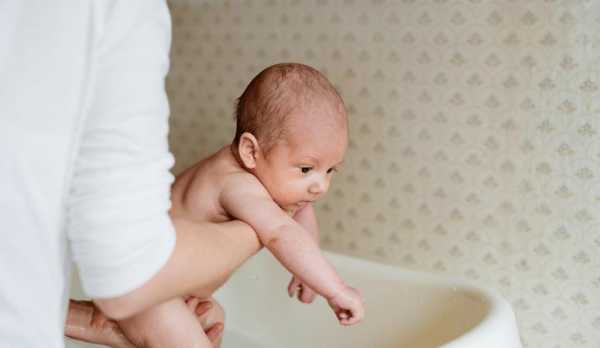
Changing diapers
Most often, mothers use disposable diapers to care for their children. There are several simple rules that are important to follow in this case:
When using them, remember that the child should not be in one disposable diaper for more than 4 hours. You need to put a diaper on a newborn so that the umbilical part is not covered. This is necessary for the fastest healing of the umbilical wound.
It is advisable for the baby to just lie on a diaper without a diaper for several hours a day so that the skin can breathe.
It is also important to ensure that diaper rash does not form on the skin under the diaper. To prevent diaper rash, you need to dress your baby according to the weather, that is, not overheat him, and you can also use a special diaper cream.
If diaper rash has already formed, you need to consult a doctor, he will recommend a remedy for healing it, most likely it will be a cream containing dexpanthenol - an effective healing medicine.
Of course, it is better to prevent diaper rash, as it can be very painful and bother your baby.
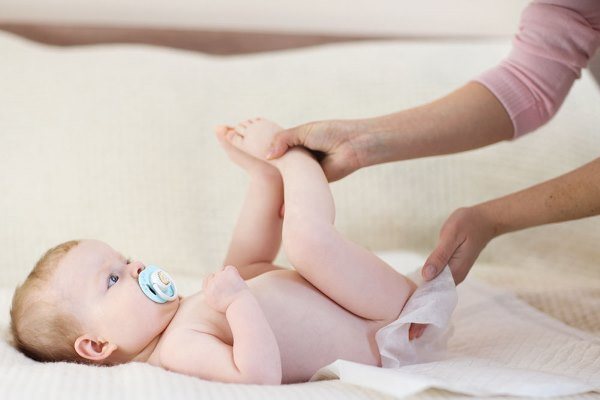
Bathing a newborn
All mothers are interested in the question: when can you start bathing your baby after being discharged from the hospital?
“You can bathe your child immediately after discharge, but if you have been vaccinated with BCG, it is better not to bathe your child within a day or two after vaccination, so as not to wet the injection site.”
After the umbilical wound has healed, you can bathe the child in a regular bath in tap water, gradually increasing the bathing time from 5 minutes to 30-40.
Every day while bathing the child, you need to wash his genitals and buttocks, 1-2 times a week you need to wash the entire baby with soap, and also wash the child’s hair with a special baby shampoo.
Important! Always bathe your child with the bathroom door open, this will prevent your child from being so cold after you take him out of the water, since the temperature difference will not be too great.
Each time you lower your baby into the water slowly, starting with his feet. The child's entire body must be supported in the water. If water gets into your baby’s ears or eyes while bathing, it’s not scary, it’s completely natural!
Already from the first days of life, you can begin to lightly harden your child. To do this, before you start bathing your baby, prepare and place a vessel with water in the bathroom, the temperature of which will be 0.5-1 degrees lower than the temperature of the water in the bath. At the end of the bath, pour water from this container onto the child.
After bathing the baby, you need to blot it with a diaper or towel, but do not dry it, as this procedure can damage the delicate baby skin.
You also need to prepare two small cotton wool flagella and gently screw them into the child’s ears so that the cotton absorbs the water that got into the ears during bathing. After the baby's skin has dried, it is advisable to treat the folds with baby oil.

Newborn nail care
It is necessary to take care of your baby’s nails 1-2 times a week, since children’s nails grow very quickly. To cut nails, you need to purchase special scissors with rounded ends. On the toes, nails should be cut straight, and on the hands, the edges should be rounded.
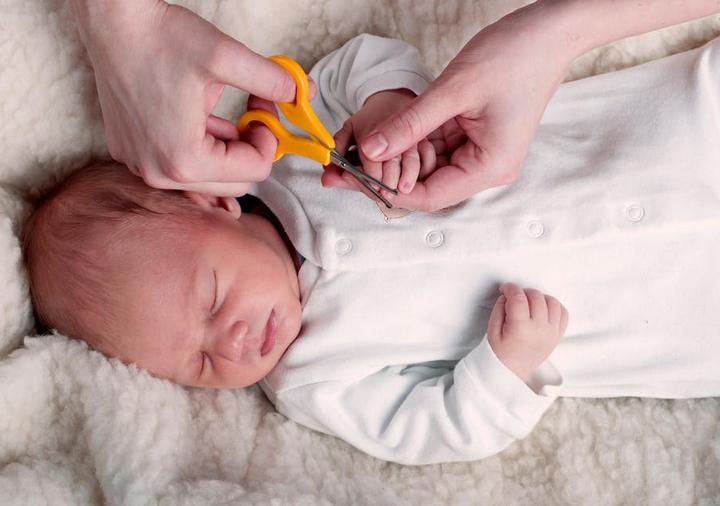
Walking with a child
In the summer, you can go for a walk with your baby the next day after being discharged from the hospital. It is advisable to protect the child from direct sunlight. It is better to go for a walk in the summer either in the morning (before 10 a.m.) or in the evening (after 6 p.m.), at this time it is not so hot.
In winter, it is recommended to start walking 2-3 days after discharge from the hospital. If the temperature outside is below 10 degrees, it is better not to go for a walk with your baby.
The first walk should be very short - 10-15 minutes. Then every day you should walk 10 minutes longer.
When preparing for a walk with their baby, mothers usually doubt whether they have dressed the baby correctly. In order not to make a mistake with clothes, you should always follow a simple rule - the baby should have as much clothes as you have, plus one more layer. This way the baby will be comfortable.
Of course, it is worth checking the child’s condition during a walk. In the summer, it is important not to overheat the baby: if the child turns red, it means that you should take something off him, he is hot.
In winter, there is a high risk of freezing. If the baby is cold, he will have cold hands, feet and nose, in which case an extra blanket will not hurt.

OH. Abzalova, neonatologist
When to seek qualified medical help

If a newborn’s belly button bleeds, in what case should you seek qualified medical help? This should be done if:
- the umbilical wound bleeds for more than 1 month;
- the navel was bleeding profusely;
- an area of swelling, inflammation and redness has formed around the umbilical ring;
- a putrid smell appeared;
- in addition to blood and ichor, purulent discharge is observed;
- body temperature rose to febrile levels;
- The child began to gain weight poorly, sleep, become restless, and cry frequently.
These symptoms may be a marker of the development of bacterial infection of the wound surface. An environment containing blood or bloody discharge is, in its composition and temperature, very favorable for the development of pathogenic bacteria.
In such a situation, it is better to consult with the pediatrician in charge of your area. Laboratory diagnostics are not required; an external examination will be sufficient. Based on this, the doctor will prescribe treatment. Most likely, an antibacterial ointment will be prescribed. If the condition is not too complicated.
Why a newborn’s navel gets wet: reasons and how to help the baby
Read further:
Degree of healing of the umbilical wound in infants
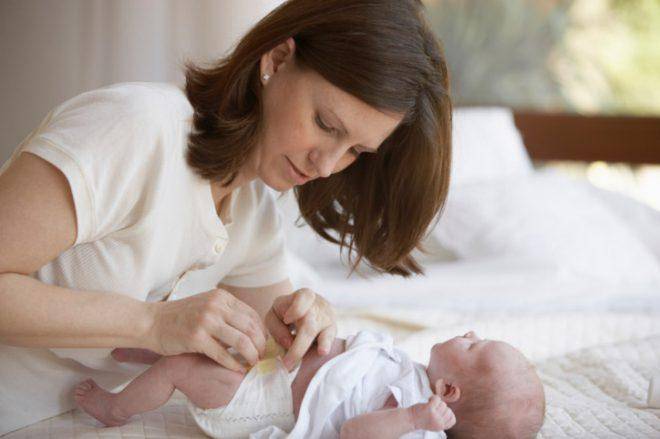
Treatment of an umbilical wound with a clothespin in a baby
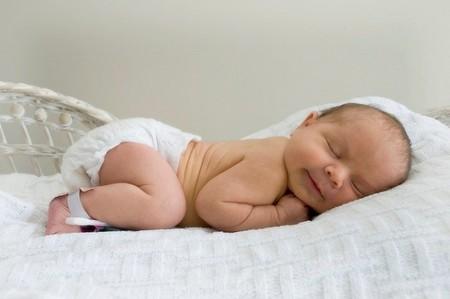
Causes of redness of the navel in a baby
Caring for the umbilical wound
Have you been trying to heal your JOINTS for many years?
Head of the Institute for the Treatment of Joints: “You will be amazed at how easy it is to cure your joints by taking the product every day for 147 rubles...
The umbilical wound requires special care until it heals. Before this, the navels of newborns were already treated in the maternity hospital with hydrogen peroxide, and then with a strong substance of potassium permanganate. Modern neonatologists urge mothers to refrain from such a brutal effect on the baby’s tender skin, because alcohol, potassium permanganate solution and other chemical elements injure the navel, preventing it from healing faster.
Practice indicates that if the umbilical area is simply kept dry and clean, it will heal within 7-10 days without the help of others. From time to time it happens that even with the most painstaking care, a newborn’s belly button still does not heal and even bleeds. As a result, suppuration may appear and an inflammatory process may begin, and if at first it is possible to deal with this problem without the help of others, then a wound that does not heal for a long time should become a matter of concern for the young mother.
What to do if a newborn’s belly button bleeds?
If the wound does not heal for a long time and blood is constantly released from it, it is necessary to provide careful care that will prevent infection and speed up the healing process
It is important to know how to treat a newborn’s navel; this will avoid serious illnesses and provide the child with a calm start in life.
Caring for a newborn's navel, first of all, consists of daily treatment of the wound, keeping it dry and clean. In addition, it is necessary to prevent injury to the navel.
First of all, before treating the navel, you need to disinfect your hands. After this, it is pulled apart with your fingers and hydrogen peroxide is instilled using a pipette. It makes the resulting crust softer, which in turn facilitates the process of removing dirt from the navel. As soon as the peroxide begins to bubble, you need to carefully clean the navel of dirt; it is recommended to use a cotton swab for this. At the end of the procedure, it is necessary to lubricate the umbilical wound with a solution of potassium permanganate or brilliant green.
When the navel of a newborn bleeds, you need to repeat this procedure 2 times a day. You should not be afraid to push the wound apart, but this should be done with great care so as not to damage it even more. If the navel continues to bleed, it is necessary to seek help from a specialist.
Newborn care
Finally, the miracle happened, and nine months of waiting gave you your baby. He is so helpless, defenseless, and so in need of your care. That is why you need to know some rules that will allow you to properly care for your newborn in the first month of life.
Proper care for a newborn is so necessary for your baby, since he spent the first nine months of his life under your protection in sterile conditions. But immediately after birth, a child encounters all kinds of microbes, from which only the family can protect him.
Children in the first month of life require especially careful attention. And this is directly related to several factors:
Firstly, the child was in a sterile environment before birth, and after birth he finds himself in an environment contaminated with microbes.
Secondly, the child has an unprotected and very vulnerable place - the umbilical wound, the treatment of which should occupy one of the dominant positions.
Thirdly, the child may receive small, unnoticeable scratches somewhere, through which infection can also enter.
Caring for a premature newborn requires even more careful preparation and attention, since the immune system of such babies is very poorly developed.
Basic principles of care.
The most important principles of newborn care can be identified:
- It is worth removing all carpets, soft toys, books and everything that can accumulate dust, subsequently causing allergic reactions in the child;
- daily cleaning of the premises where the baby is;
- maintaining cleanliness not only of the baby’s body, but also of the things around him;
- hygiene procedures;
- constant ventilation of the child’s room;
- daily change of linen, boiling and ironing on both sides;
You should not invite guests immediately after discharge from the hospital. This is not due to superstitions, but to the fact that the baby has an imperfect immune system that may not be able to cope with such a large number of foreign microbes.
Cleanliness is the key to successful care.
Cleanliness is so necessary for the health of your child, since the dust that surrounds every person contains a large number of microbes that can cause diseases. And small children are the most susceptible to them. After all, a baby, exploring the world, puts everything in his mouth. Before holding your baby, you should wash your hands with soap to get rid of completely unnecessary bacteria.
In order to properly care for a newborn, nails should be cut short. For a young mother, taking a shower and changing clothes becomes a daily procedure. Only with simple and simple rules can you achieve success in caring for your child. At the same time, morning toilet plays the main role in caring for a newborn baby.
Washing the baby.
Washing the baby is the initial stage of caring for a newborn. It requires patience from young parents. Moreover, this process is strikingly different from that of an adult.
Washing the child is done using a cotton swab or disk. The water should be boiled and its temperature should be room temperature. In addition, you can try to wash the child with your own wet and clean palm. Everything will depend on how the child reacts to the process happening to him.
Eye care.
Newborn eye care is an integral part of daily baby care. This procedure is necessary, since the baby’s mucous membranes are very susceptible to microbes and an inflammatory process can easily occur. Wash the child's eyes with a cotton pad soaked in water. At the same time, move the cotton wool from the outer to the inner corner of the eye. Each eye is washed separately. Next, take a dry cotton wool and make similar movements to dry it.
Nose care.
Caring for a newborn's nose also plays a significant role in caring for the child, since the baby develops crusts in the nose, which interfere with free breathing and make feeding difficult. At the same time, the child breathes through his mouth, refuses the breast, and becomes restless. In order to clean a child’s nose, you need to drop a drop of baby oil into each half of the nose, and then remove the loose crusts with cotton wool rolled into a flagellum. At the same time, you should not wrap the cotton wool around any hard objects, so as not to damage the delicate mucous membrane of the child’s nasal passages.
Ear care.
In order to clean your child's ears, you need to be extremely careful and make sure that water does not get into the ears. The process begins with washing the ears. Then a flagellum is rolled out of the cotton wool, which should be used to clean the child’s ear canal, being careful not to insert the cotton wool deep.
Genital care.
Caring for the genitals of a newborn is also a process that cannot be avoided. The baby is washed during his daily morning toilet and after he has performed physiological functions.
Washing a newborn is carried out as follows. Warm water is poured onto clean hands, which move from front to back, that is, from the genitals to the anus. This condition is important, since E. coli located in the rectum can cause pathological processes if it enters the genitals. After this, the child is gently blotted with a towel and powdered with talcum powder in the natural folds of the skin.
Skin care.
Skin care for a newborn is carried out from the first days of his life. To do this, daily bathing is used, and then lubricating the delicate baby skin with cream or oil.
You can bathe your child 2 hours after the umbilical wound has healed. The young parents will be informed about this by the doctor or midwife who comes for the first visit to the mother and baby. In addition, they will be able to show how this procedure is performed correctly.
For bathing, you will need a bathtub purchased specifically for your child. It is prohibited to use it for other purposes. When bathing, the water should be 37 0C and fill the bath enough to completely cover the newborn’s body. Towels and diapers for a baby of the first year of life must be warmed with a heating pad. A baby up to six months of age is washed by hand without using washcloths or other means.
Nail care.
Once every 7 days, the child needs to cut his nails so that he does not scratch himself while sleeping or awake. To do this, you will need special scissors with rounded edges. Before you begin the procedure, you should wash the scissors in hot soapy water and then dry.
Caring for the umbilical wound.
To properly care for the umbilical wound of a newborn, you must follow very simple rules:
Firstly, it is necessary to carry out daily disinfection of the umbilical wound with hydrogen peroxide or brilliant green so that infection does not penetrate through it.
Secondly, until the umbilical cord is separated, moisture should not be allowed to enter the umbilical wound. If this happens, it must be processed immediately.
How to treat a newborn baby's navel. A child's first aid kit should contain the following:
- cotton swabs;
- brilliant green (brilliant green solution);
- hydrogen peroxide;
- pipette;
- cotton buds.
After the baby has been bathed, hydrogen peroxide is dripped onto his umbilical wound with a pipette. You should wait a while until the product stops foaming and the crust softens. Hemorrhagic crusts may be yellow or bloody. After softening, you need to carefully and as far as possible spread the area of skin around the umbilical wound, conduct an examination and carefully remove the remaining crust with cotton swabs.
Next, dry the area with cotton wool or a gauze cloth (a piece of bandage). After this, you can lubricate the skin around the umbilical wound with brilliant green. Once again, when applying hydrogen peroxide, it is noticeable that it does not foam, there is no need to apply peroxide.
The baby does not experience pain during the procedure for treating the umbilical wound, only slight discomfort. Parents should not be afraid to touch the umbilical wound. If the umbilical wound is not treated sufficiently, inflammation of the adjacent tissues may occur - purulent omphalitis.
What to do if a newborn’s navel gets wet?
If the umbilical wound of a newborn does not heal for a long time, and discharge appears (except for sanguineous discharge), parents should not keep silent about this fact, but should immediately consult a doctor.
Belly button and diaper.
The umbilical wound should not be under a diaper (disposable or gauze). To ensure its rapid healing, the crust dries out more quickly, and wetting is not provoked, it is necessary to ensure that the area around the umbilical wound remains open to avoid infection.
The diaper must be worn so that its upper edge does not injure the wound, so that the skin around it does not irritate. It’s great that some manufacturers have a new product - diapers that have special cutouts for belly buttons. What to do if your newborn is too tiny and you can’t find the right diaper for him? You just need to unscrew the edge that prevents the wound from “breathing” freely.
Timely replacement of diapers is a must. Parents should ensure that urine and feces do not fall on the unhealed umbilical wound.
Pediatrician (Head of Pediatric Department No. 2) Pechenko Natalya Dmitrievna
The navel is bleeding
A newborn's navel may bleed due to damage to the wound during care.
The main reason why a newborn's navel bleeds is a restless child. The fact is that by constantly straining the abdominal muscles while crying, the baby interferes with the natural healing process, and the bleeding area causes a lot of trouble and even precedes an umbilical hernia.
If the newborn's navel bleeds, then this pathological condition may be preceded by injury to the characteristic zone
It can be caused by the falling off of the crust, friction of the navel with the diaper, chaotic baby movements, or carelessness of the mother.
The problem is not global, but care for the baby needs to be strengthened. In addition to treating a newborn’s navel (along with the clothespin), it is necessary to avoid contact with the diaper, control your own and the child’s movements, promptly calm the baby, and prevent attacks of causeless hysteria.
Caring for the wound must be carried out in compliance with all hygiene rules, otherwise a situation cannot be ruled out when the navel begins to get wet.
Also, the wound may simply heal poorly on its own and bleed. In this case, it is also necessary to consult a doctor and choose another means for treatment.
Important! If a newborn's belly button is bleeding, you should definitely consult a doctor to rule out the presence of pathology. The doctor must also prescribe a treatment agent and indicate the necessary care to prevent infection of the wound.
What to do?
You can treat the navel of a newborn with ordinary brilliant green or potassium permanganate.
If a characteristic problem arises, the first thing you need to do is show the bleeding navel to your local pediatrician. The doctor will not only examine the prevailing clinical picture, but will also rule out the presence of an umbilical hernia.
Treatment, as a rule, is conservative and involves carrying out basic procedures at home and proper care of the newborn baby.
If there is no global problem, then treating the newborn’s navel is recommended with tincture of calendula or camphor, hydrogen peroxide, a weak solution of potassium permanganate, and in some cases chlorophyllipt.
The use of “green stuff” is also not prohibited, although many believe that such a solution excessively dries out the baby’s skin and aggravates the prevailing clinical picture. Whether it is possible to bathe a newborn if his navel is bleeding - the doctor must also decide, depending on the complexity of the problem. The basic rules of swimming can be found here.
When the problem does not resolve and the bleeding continues for more than two weeks, the doctor does not exclude the use of external antibiotics. In this case we are talking about Baneocin powder, which needs to be carefully sprinkled on a pre-treated and cleaned wound.
It is advisable to carry out the procedure up to 3 times a day, while avoiding contact of sensitive skin with the diaper. As practice shows, within 3–4 days the problem will be completely resolved.
To understand how to properly treat the navel in newborns, you can watch the following video:
Much depends on the child’s behavior: if he constantly screams, cries and is capricious, or sleeps poorly, then the recovery process is noticeably delayed. It is much easier for calmer babies to speed up the healing process of the umbilical wound.
One way or another, superficial self-medication at such an early age is strictly prohibited, especially when it comes to medications, even for local use. The sooner you respond to a problem, the greater the chances of solving it as soon as possible without extremely undesirable surgical intervention by doctors.
How to choose the right clothes for a newborn
The thin and delicate skin of a baby is vulnerable. This should be taken into account when choosing clothes:
- it must be made from natural materials without the addition of synthetics, allow the skin to breathe and not contain harmful dyes that can cause allergies;
- there should be no seams or elements passing through the navel that could rub or scratch it, and the clothing itself should not be tight;
- if possible, contact with clothing during the healing period of the umbilical wound should be minimal, but since the clothing touches the wound, it will definitely need to be ironed before putting it on the child, so as not to cause infection [1];
- When putting on a diaper, its edge should not reach the navel.
In order for the wound to heal faster, it must always remain clean and well ventilated. Remember this when choosing clothes and when dressing your child.
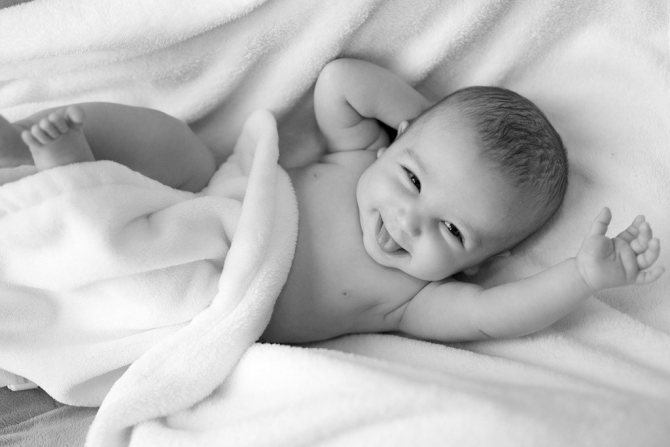
The healing process of the navel in a newborn
Normally, the navel heals completely in about the 3rd week. For some children, the duration of this process is shorter, for others it is longer. As for the clothespin on the navel, most often it falls off in the maternity hospital, about 3 days after birth, but this can happen a little later. It happens that the clothespin falls off for some babies at home after discharge.
Every responsible mother should understand that this wound in a newborn can become a gateway for various infections to enter the body. That is why it is necessary to monitor her condition and carry out antiseptics on her own or with the help of a visiting nurse.
Sometimes ichor may come out of the wound; in this case, there is no need to sound the alarm. If the navel bleeds for a long time and causes suspicion among parents, then the best way out of the situation would be to contact a pediatrician. It should be noted that daily treatment of the wound should become the norm for every mother, such as changing a diaper, until the navel is completely healed.
What antiseptics should I use?
After discharge from the hospital, parents will have to continue caring for the umbilical wound at home. Care means following the rules of hygiene and treating the wound with disinfectant solutions approved in pediatrics.
If, a few days after discharge, no positive dynamics are observed - the wound becomes wet, and droplets of blood or even pus are released from it, then an immediate consultation with a surgeon or pediatrician is necessary, who should examine the child.
To treat the navel, it is recommended to use:
- 1% solution of brilliant green. In addition to the disinfectant and bactericidal effect, it has drying properties due to the presence of alcohol in it. This will significantly speed up the drying of the umbilical cord and the formation of a crust after it falls off.
- 1% alcohol solution of chlorophyllipt. It also helps dry the wound, and in addition, allows you to monitor its condition, since this antiseptic is transparent.
If a crust has formed on the umbilical wound, it can be carefully removed by first soaking it while bathing and then treating it with 3% hydrogen peroxide.



